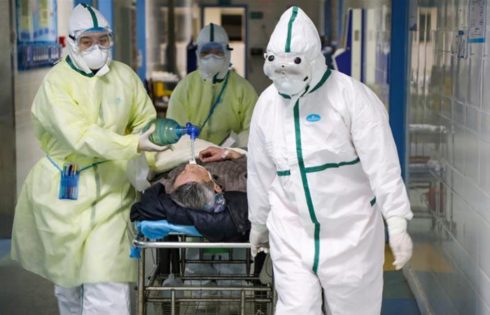Public-facing scientists, UK’s chief scientific adviser, Sir Patrick Vallance, and his US counterpart, Anthony Fauci, have reaffirmed that Covid-19 vaccine will be ready in 12 to 18 months. But other voices – including some of those in the race to create a vaccine themselves – have suggested that it could be as early as June. Who is right?
The former, probably, but it’s complicated because this pandemic is forcing change at almost every step in the process by which a new vaccine arrives at a needle near us.
“It really depends on what you mean by ‘having a vaccine’,” says Marian Wentworth, president and CEO of Management Sciences for Health, a Massachusetts-based global not-for-profit organisation that seeks to build resilient health systems, and a long-time observer of vaccine development. “If you mean one that can be used in a mass vaccination campaign, allowing us all to get on with our lives, then 12 to 18 months is probably right.”
But in terms of an experimental vaccine that is deemed safe and effective enough to be rolled out in a more limited way – to high-risk groups such as health workers, say – that could be ready within weeks or months, under emergency rules developed by drug regulatory agencies and the World Health Organization in the context of the recent Ebola epidemics in Africa.
When the University of Oxford’s Adrian Hill told the Guardian that his group’s Covid-19 vaccine candidate could be ready by the summer, it was this kind of readiness to which he was probably referring. The group, led by Sarah Gilbert, has since stated that a vaccine shown to be effective in phase-3 clinical trials that could be manufactured in large quantities won’t be ready before the autumn even in a best-case scenario. And that scenario is “highly ambitious and subject to change”.
Normally, a vaccine is developed in the lab before being tested on animals. If it proves safe and generates a promising immune response in this pre-clinical phase, it enters human or clinical trials. These are divided into three phases, each of which takes longer and involves more people than the previous one. Phase 1 establishes the vaccine’s safety in a small group of healthy individuals, with the goal of ruling out debilitating side effects. Phases 2 and 3 test efficacy, and in an outbreak like the present one they are conducted in places where the disease is prevalent. In parallel with these later phases, production capacity for the candidate vaccine is gradually built up, so that factories are capable of producing it on a large scale if and when regulatory agencies judge that it should be licensed.
In an article published in The New England Journal of Medicine on 30 March, representatives of the Oslo-based not-for-profit Coalition for Epidemic Preparedness Innovations (Cepi), which is helping to finance and coordinate Covid-19 vaccine development, laid out an accelerated version of this process that they believe is more suited to a pandemic. This “pandemic paradigm” implements certain steps in parallel, such as animal and phase-1 clinical testing. It also involves scaling up production capacity before sufficient safety and efficacy data are available – a financially risky step, given that that may never materialise, and one that requires governments and not-for-profit organisations such as Cepi to share that extra financial risk with pharmaceutical companies if they want them to engage. Mass production is critical in a pandemic, when hundreds of millions if not billions of doses are needed – and many countries are now scrambling to build new vaccine production facilities.
“People now appreciate that the lengthy process of conventional licensing of vaccines is not going to be helpful in the context of an epidemic,” says Beate Kampmann, who heads the vaccine centre at the London School of Hygiene and Tropical Medicine.
Bringing a new vaccine to the clinic has taken 10 to 20 years in the past
Prudently, Cepi did not attach a timeline to its accelerated paradigm, but the 12- to 18-month estimate already takes it into account. Bringing a new vaccine to the clinic has taken 10 to 20 years in the past. Nevertheless, the accelerated paradigm is being implemented now. A Boston-based biotech firm, Moderna, saw its experimental Covid-19 vaccine enter human trials on 16 March, just 10 weeks after the first genetic sequences of Sars-CoV-2 – the virus that causes the disease – were released. Others will follow soon.
“We’re getting to candidates much more quickly,” says Kampmann, who puts this progress down to advances made in the fight against Ebola. “The step-up in technology that we have seen in the last five years has really made a difference.”
There are many hurdles ahead, though. Most of the 70-odd Covid-19 vaccine candidates being developed and tested will not make it to the licensing stage, and those that have been fastest out of the blocks may still encounter problems later on. Moderna’s innovative technology allowed it to generate a candidate quickly, but no vaccine using this platform has been licensed to date.
At the Pasteur Institute in Paris, on the other hand, a Covid-19 vaccine candidate is still in pre-clinical development, but because it piggybacks on established technology – a licensed measles vaccine – the testing and licensing processes will go faster. And this kind of vaccine can already be produced in large quantities.
While there can be no shortcuts to establishing safety and efficacy, proposals have been put forward for how these experimental vaccines might be tested more rapidly without sacrificing scientific rigour. In February, for example, the WHO published a draft protocol for phase 2 and 3 trials that would test a number of candidates simultaneously, in multi-country trials according to standardised criteria.
Another proposal is to conduct controlled human challenge trials, in which healthy volunteers are given a candidate vaccine and then infected with Sars-CoV-2. These are ethically questionable, especially before scientists understand why young and otherwise healthy people are ending up on ventilators. A similar approach, being implemented by the London-based clinical research group Hvivo, invites volunteers to be infected with a milder coronavirus – but how applicable its findings will be to Sars-CoV-2 is not clear. If our own body can’t prevent us from getting it again, that would be one pretty damning signal
There are still many unknowns with respect to Covid-19, including for how long any vaccine will provide protection. A strong indication of this will be whether people who have recovered from the disease can catch it again. There have been anecdotal reports of re-infection, but the phenomenon is not well understood. “If our own body can’t prevent us from getting it again, that would be one pretty damning signal,” says Wentworth.
Once a vaccine is licensed, there will still be political obstacles to getting it to where it’s needed, because each country or public health jurisdiction has to make its own decision to roll it out. There will also be issues of prioritisation – who should get it first, if supplies are limited – which authorities are discussing now.
A vaccine that is approved a year from now may arrive after the end of the current pandemic, but if so it won’t be wasted – first because Covid-19 may recur seasonally, and second because the vaccine could itself be repurposed in the event of an outbreak of a different coronavirus. That will be no consolation to victims of this pandemic, or their relatives, but it does mean that humanity will be better protected in future. As Wentworth says: “That learning, we won’t unlearn.”
-theguardian


